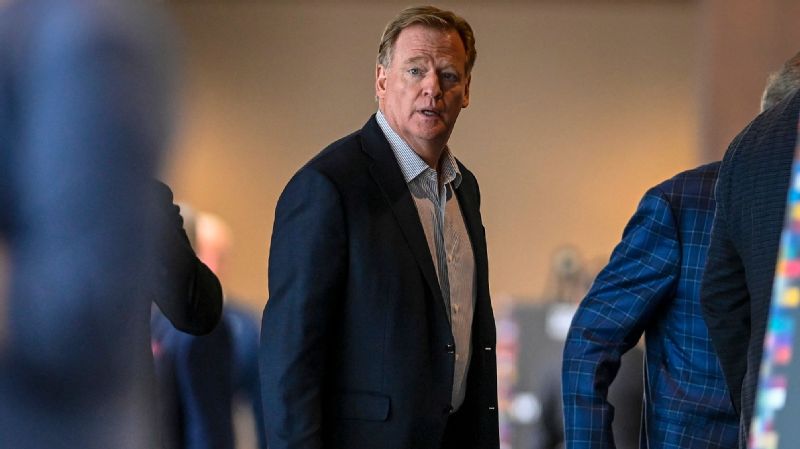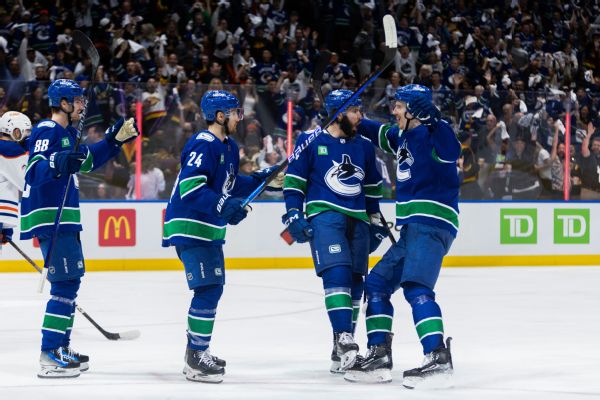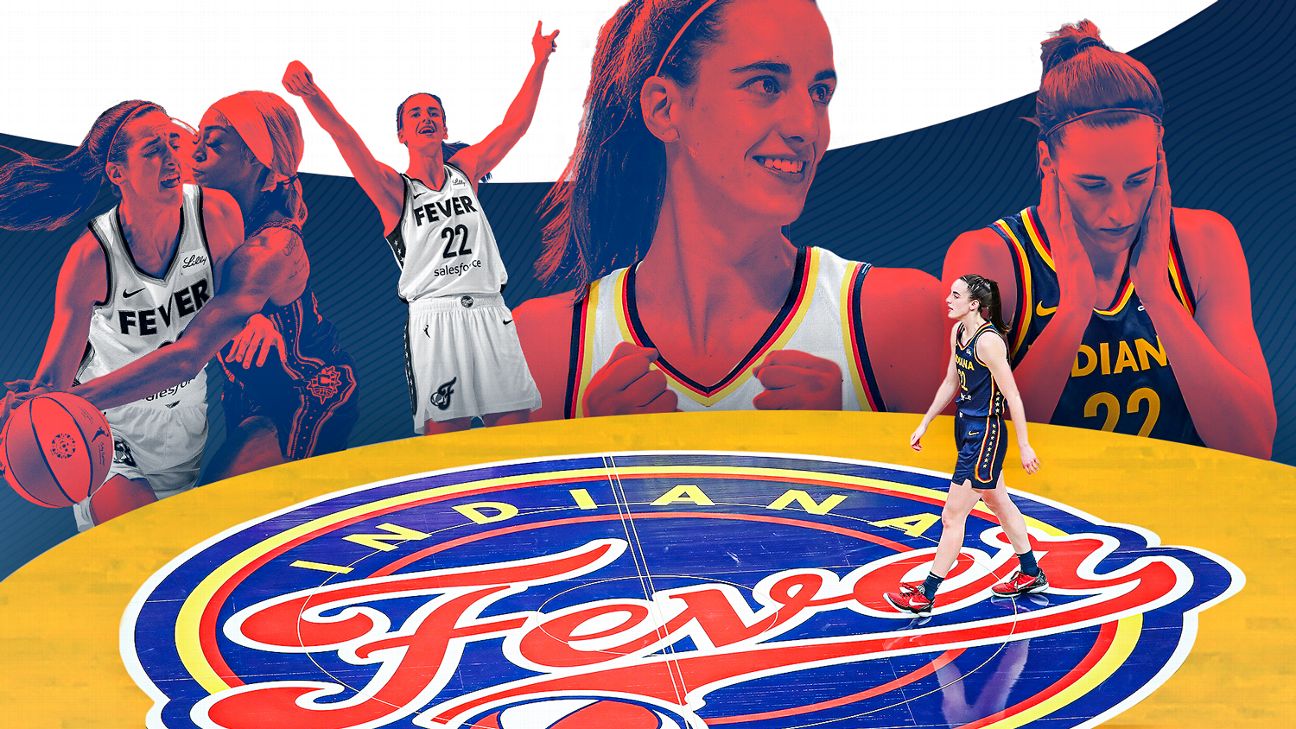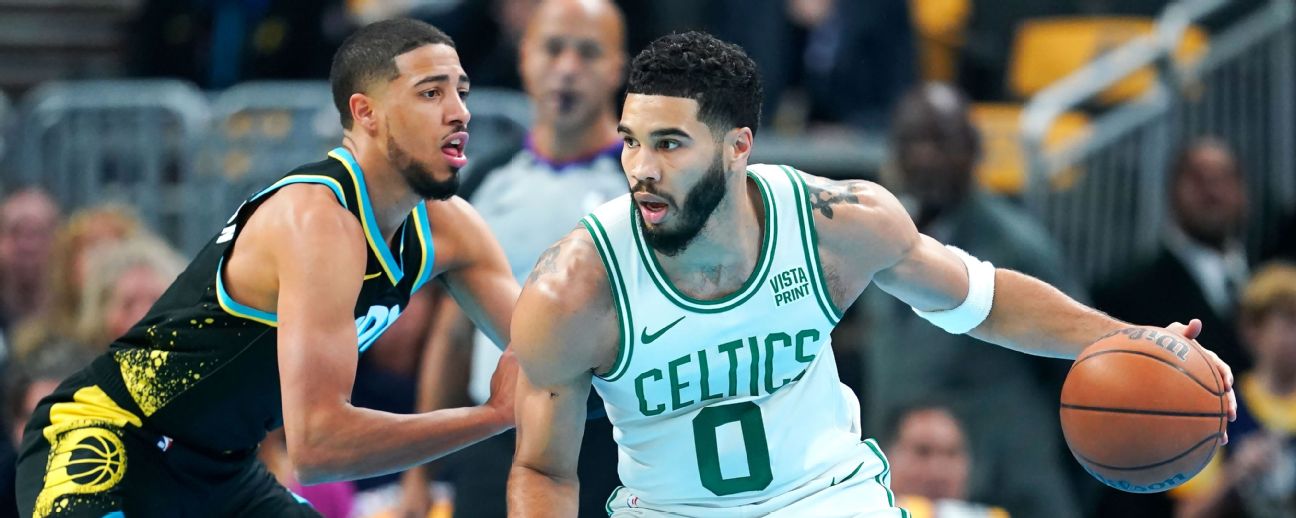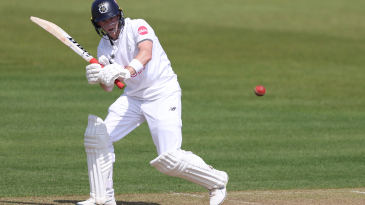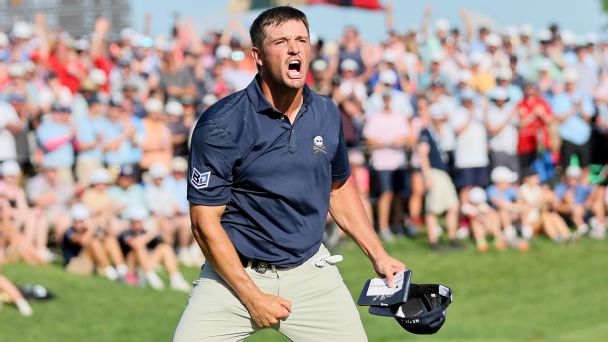![Acuna, Lindor [608x342]](https://a.espncdn.com/photo/2024/0509/r1330702_608x342_16-9.jpg)
Arne Slot named as Klopp successor at Liverpool
It looks like we're headed for a much different race in the National League East than last season, when the Atlanta Braves cruised to a division title behind a record-setting offense. They spent just one day out of first place after their third game of the season and pulled away in the second half to win the division by a whopping 14 games.
The Philadelphia Phillies have reversed their slow starts of the past two seasons -- when they were under .500 at the beginning of June -- to become the hottest team in baseball, led by a deep starting rotation and a locked-in Bryce Harper. They moved into first place in the NL East last weekend as they swept a four-game series from the Giants while the Braves suffered a sweep at the hands of the Los Angeles Dodgers.
The Washington Nationals and New York Mets, meanwhile, are hanging around .500, which puts them in the thick of the wild-card chase. And the Miami Marlins, last year's surprise wild-card team ... Well, they're on pace for the worst record in franchise history.
With the Braves and Mets squaring off on Sunday Night Baseball this weekend at 7 p.m. ET, let's take stock of the division with 10 questions, starting with Atlanta and New York.
1. What's wrong with the Braves' offense?The easy answer: probably nothing. But after the Dodgers held the Braves to six runs in last weekend's three-game sweep, it's hard to not compare this offense to last year's, which set an NL record with 307 home runs and became the first team to slug .500 in a season. Of course that wasn't going to happen again. Using FanGraphs' weighted runs created metric, which adjusts for league offensive levels and home park, the 2023 Braves matched the legendary 1927 Yankees as the best offense of all time. That's a tough act to repeat.
Indeed, here are the eight best offenses via wRC+ since 1920 and how they fared the following season:
1927 Yankees: from 125 to 116 (6.30 runs per game to 5.81) 2019 Astros: from 124 to 97 (5.68 runs per game to 4.65) 1931 Yankees: from 124 to 118 (6.88 runs per game to 6.42) 1930 Yankees: from 123 to 124 (6.90 runs per game to 6.88) 2017 Astros: from 121 to 110 (5.53 runs per game to 4.92) 1976 Reds: from 120 to 108 (5.29 runs per game to 4.95) 1982 Brewers: from 120 to 109 (5.47 runs per game to 4.72) 2003 Red Sox: from 120 to 114 (5.93 runs per game to 5.86)Only the 1930-31 Yankees maintained or improved. The Braves have dropped from 125 wRC+ to 112 so far this season, which is on par with some of the above drops. They're still a very good offensive team ... And there's plenty of time for them to heat up over the summer.
2. What's going on with Matt Olson and Ronald Acuna Jr.?This is why there might not be too much cause for concern: The Braves are still averaging five runs per game even though their two big stars from 2023 are way down in their production. Olson has now gone 25 games without a home run, a stretch in which he's hit .163. Despite those numbers, I'm less concerned about Olson than Acuna. Olson is hitting the ball hard with elite exit velocity, his walk and strikeout rates are stable from last season and he's hit into some bad luck. His timing has just been a little off. The bad start is in the book so he's not going to reach 54 home runs again, but look for those homers to start flying.
Acuna's big improvement last season was cutting his strikeout rate in half, from 23.6% in 2022 to 11.4% in 2023, which is basically unprecedented (it was the second biggest season-to-season since 1901). He's now back striking out around 25% of the time -- he currently sits at 26.1% -- as his whiff rate has fallen from the 84th percentile to the 25th, which would be a career worst. He's struggling with fastballs up in the zone. Maybe his knee is bothering him again, but he's on pace for 67 steals, so that doesn't quite add up either, unless the knee only affects him on his swing. I'm a little worried here.
3. Are the Mets good, bad or mediocre?It's hard to get a read on the Mets right now. They started 0-5 and everyone was dumping on them with a little too much glee before they turned around and won eight of nine to climb to 12-8. They followed that up by losing series to the Giants, Cardinals and Rays (a sweep) to fall to 16-18, only to then beat the Cardinals twice in a row to climb back to .500. In the end, that's probably what this team is: very average. The lineup is OK, the rotation is OK, the defense is OK and the bullpen might be a little better than OK if out-of-nowhere Reed Garrett keeps it going.
The biggest problem is the supposed stars -- Pete Alonso, Francisco Lindor and Kodai Senga -- haven't carried the load like you need your stars to. Alonso has nine home runs, but his batting average and OBP remain low. Lindor got off to an atrocious start, although he has been better of late with 14 RBIs over his past 13 games. With Francisco Alvarez out and J.D. Martinez homerless in his first 37 at-bats, the meat of the order has simply not been good enough.
With Senga still sidelined, the rotation is in the bottom third of the majors with a 4.34 ERA, although Adrian Houser bears a lot of that blame with an 8.16 ERA. Sean Manaea (who starts Sunday), Jose Butto and Jose Quintana are each averaging more than four walks per nine (and Luis Severino is just under that mark at 3.8) as the Mets' rotation has the highest walk rate in MLB. That group has survived so far by limiting home runs, but the worst strikeout-to-walk ratio among starting rotations isn't a sustainable path to success. Senga is supposed to throw another bullpen before taking his next steps, but that means there's still no timetable on his return. Start those Justin Verlander-back-to-New York rumors.
4. But is there hope for the Mets?Yes! Christian Scott may not be Paul Skenes, but he looks like he has a chance to be a No. 3-type starter. In his first MLB start, he allowed one run in 6⅔ innings -- along with six strikeouts and just one walk, a bit of a novel idea for this year's Mets rotation. He's a credit to the Mets' scouting and player development as a fifth-round pick in 2021 out of Florida, where he was primarily a reliever. He converted last season to a starter and emerged as Kiley McDaniel's No. 99 overall prospect entering the season. He throws 95 mph with both a sweeper and slider, plus a splitter that he'll need to use against lefties, and pounds the strike zone. The one issue over the rest of 2024: He pitched just 87 innings in the minors last season, so if he does manage to pitch well enough to stay in the rotation, he's likely to run into an innings limit.
Still, with Scott, Senga, more offense and an effective bullpen, the Mets can certainly envision a path to wild-card contention. After all, once you get past the Dodgers, Braves, Phillies and the NL Central champ, the other two wild cards seem wide open.
5. Who is the best player in the division right now?Just sticking to position players on the Braves, Phillies and Mets, let's consider: Acuna isn't hitting for any power, Olson is struggling, Austin Riley hasn't gotten going, Michael Harris II is slumping, Trea Turner is injured and Lindor and Alonso both have sub-.300 OBPs. Maybe Marcell Ozuna, but he's a DH. Harper has been red-hot the past three weeks and is playing good defense at first base, but that came after a slow start.
The answer might be Philadelphia's Alec Bohm, who is hitting .346/.413/.549 with four home runs and 32 RBIs. He leads all NL East position players in both bWAR and fWAR and ranks third in the majors in RBIs behind Ozuna and Juan Soto thanks to a .444 average with runners in scoring position.
Bohm has been a nice complementary player for the Phillies the past couple of seasons -- but perhaps also a little overrated, as his stat line was pretty empty beyond a decent batting average. He had a lot of negatives in his game: poor defense at third, not many walks, led the NL last year in grounding into double plays, not much speed on the bases, some power but not big power. These negatives were reflected in his bWAR: 0.9 in 2022 and 0.4 in 2023. He was an average hitter but was below average in pretty much everything else.
So far in 2024, he's been better in those secondary skills. According to Statcast, his defense has vastly improved (86th percentile in range), he's walking more, he's running the bases better and he's avoiding as many double plays. Of course, the batting average is way up (he just had an 18-game hitting streak end), which pumps his OBP and slugging figures.
Is he for real? Despite the gaudy stats, there isn't much change in his overall hitting metrics, other than him taking a few more walks. That alone does add value, and his contact ability will go a long way to keeping the average around .300. He's 27, the age when most players have their best year, so he might be headed for a career season.
6. How good is that Phillies rotation?So good that after Taijuan Walker returned from the injured list, Spencer Turnbull was sent to the bullpen even though he had a 1.67 ERA in his six starts. The all-time best Phillies rotation according to FanGraphs WAR was 2011, when Roy Halladay, Cliff Lee and Cole Hamels each posted sub-3.00 ERAs, while Roy Oswalt, Vance Worley and Kyle Kendrick were all also good, putting the overall rotation ERA at 2.86. That's not only the best Phillies rotation ever, but the best ever rotation period, at least according to FanGraphs. The 2024 rotation is currently on pace for 23.9 WAR, which would be a top-10 all-time figure.
Obviously, there is some regression ahead, namely that Ranger Suarez probably can't keep up a 1.72 ERA and .173 batting average allowed. Zack Wheeler, however, has a pretty strong case as the best starter in the game right now given his track record, health and dominant performance so far in 2024. If you want to make a completely rational argument as to why the Phillies will win the NL East, this is it: This rotation might be really special.
7. What is the most impressive thing going on in the division that we might be missing?The Nationals' double-play combo of CJ Abrams and Luis Garcia Jr. Both players were rushed to the majors before they were ready -- Abrams by the Padres in 2022 and Garcia by the Nationals in 2020 -- but are now developing into real threats as hitters. Skinny and overmatched in 2022, the now-23-year-old Abrams has seven home runs, 18 extra-base hits and is slugging .537. Garcia, who turns 24 on May 16, is hitting .321 and has the higher raw exit velocity metrics of the two, although he doesn't lift the ball as much as Abrams. Bottom line: Both players can hit. Both are also a little too aggressive at the plate (especially Abrams) and neither are exactly Gold Glove candidates, but for a franchise mired in losing baseball and uninteresting rosters the past couple of seasons, it's an exciting development.
8. What has been the biggest surprise in the division?It's only five starts, but Nationals rookie Mitchell Parker is 2-1 with a 2.67 ERA and a fine 22-to-5 strikeout-to-walk ratio over 27 innings. The big, 24-year-old lefty wasn't highly regarded as a prospect entering the season, and while his fastball sits at 92 mph, he has excellent extension and mixes in a splitter and curveball. His fastball doesn't generate much swing-and-miss, so this remains a wait-and-see situation to figure out if he's the real deal, but it's a nice positive for an organization that has really struggled to develop pitching.
Indeed, Washington's pitching has been surprisingly respectable so far. There isn't much depth here and Patrick Corbin continues to get hit hard, but if MacKenzie Gore, Jake Irvin and Parker continue to make strides, well, you never know. Maybe the Nationals can surprise like the Marlins did a year ago.
9. Speaking of ... You haven't said anything about the Marlins.Is there a question here? (If you're wondering what Miami is thinking, here's what their new GM has to say ...)
10. Who's going to win the division?This looks like a repeat of 2022, when the Braves and Mets ended up tied with 101 wins, only with the Braves and Phillies this time around. It feels a little strange to still peg the Braves as a big favorite without Spencer Strider, but I'm inclined to agree with FanGraphs' projections, which gives the Braves 73% odds to win the division with the Phillies at 25%. Both teams have deep bullpens, and while the Phillies have the edge in rotation depth with Turnbull now lurking as a sixth starter, the Braves haven't seen the best from their lineup yet. I'll go with Acuna and Olson picking it up and Atlanta taking the division title, 104 wins to Philly's 103.




